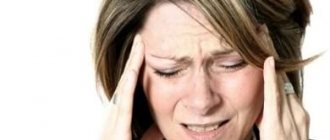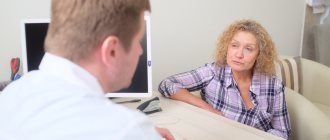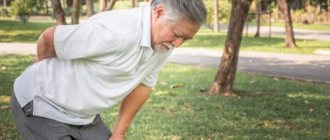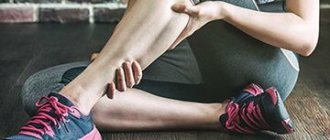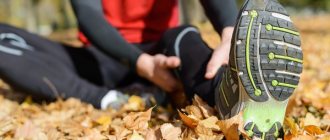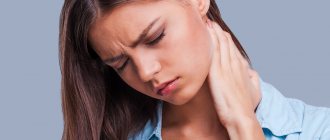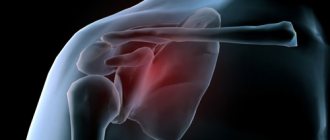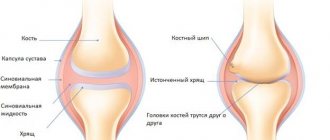Lower back pain radiating to the leg is a serious reason to consult a doctor. Do not tolerate neuralgia: it requires treatment, like any other disease.
Unfortunately, services for the treatment of lumbar nerve entrapment have been suspended. Familiarize yourself with the symptoms of the disease and contact your doctor.
A pinched nerve of the lumbar spine is compression of nerve endings by spasmed muscles, displaced vertebrae or a hernia. Accompanied by attacks of acute pain and impaired mobility of the patient. How dangerous is this condition and how to treat it?
Pinched lumbar nerve is observed in patients after 30 years of age and brings a lot of trouble, as it directly affects a person’s quality of life and performance.
Cause of lower back pain
The lower back is considered the most vulnerable place in the human body, as it bears the maximum load. Therefore, many experts consider the appearance of pain in this place to be normal if there was increased physical activity, sudden movements, or prolonged standing in a stationary position. In this case, it is enough to give your back a rest and take a lying position; after a few hours there will be no trace of the unpleasant sensations. But lower back pain can also occur for other reasons. The most common of them are:
- Lumbago or sciatica.
- Complications of chronic pathologies.
- Intervertebral disc displacement.
- Spinal injury.
- Prolonged muscle tension.
- Osteochondrosis of the lumbar region.
- Deformation processes in the ridge.
- Pyelonephritis or other kidney disease.
- Complications during pregnancy.
- Pathologies of the reproductive system.
- Infectious processes.
If their back hurts and the problem cannot be dealt with on their own, patients rush to see a doctor. After ARVI, this is one of the most common reasons for people coming to the hospital. During the examination, infectious processes, degenerative processes in the spine or deformations of the vertebrae and discs are usually detected. It is they who most often lead to inflammatory processes of nerve endings, and as a result – the appearance of pain.
The importance of physical therapy
Gymnastics for lumboischialgia should initially be aimed at eliminating muscle spasms. Equally - to relieve muscle swelling and venous stagnation in them and the roots of the intervertebral foramina. Ultimately, the goal of therapeutic exercise is to optimize the movement pattern. In other words, it is necessary to make the spine work more correctly, without overloading any of its segments. This is necessary to ensure that the disks do not fail prematurely. And also, new hernia protrusions did not appear, and old ones did not increase. All physical therapy should be built taking into account the individual characteristics of the patient. This is posture, features of the location of hernias and protrusions of intervertebral discs. Physical therapy exercises in combination with manual therapy are not only the prevention of relapses in chronic vertebrogenic lumbodynia. They are a prevention of the degenerative-dystrophic process (osteochondrosis of the spine), as such.
How to treat lumbago with sciatica
Treatment of lumbago with sciatica is basically carried out in almost the same way as lumbago without sciatica. But sciatica requires additional therapeutic efforts and measures. Sciatica with lumbago most often causes reflex spasm and swelling of the piriformis muscle. The spasmodic and swollen piriformis muscle, in turn, compresses the sciatic nerve, resulting in a “pulling pain in the leg.” It is necessary to eliminate spasm and swelling of the piriformis muscle. For this purpose, therapeutic blockades of the piriformis muscle, manual therapy, reflexology, and physiotherapy are used.
With the development of osteochondrosis, the formation of protrusions and hernias of the spine, concomitant diseases play an important role. This is primarily an endocrine pathology: diseases of the thyroid and parathyroid glands, adrenal glands and progressive diabetes mellitus. In case of lumbago, as a particular manifestation of osteochondrosis, it is necessary to check the condition of the kidneys (conduct an ultrasound), and do a general blood and urine test.
First aid
The pain usually appears suddenly when bending your back or trying to lift a heavy object. When you try to change your position, it only gets worse. What can you do to help yourself in such a situation? First of all, the following measures must be taken:
What to do if your lower back hurts?
- Try to slowly walk to the bed and lie down. If it is made of mesh or has a soft mattress, then it is better to sit directly on the floor. Some stretching will help reduce pain.
- Do not get up abruptly, even if the condition has significantly improved. If you need to change your resting place, you need to roll over onto your stomach, kneel down, and only then carefully rise, trying to minimally load the affected area.
- Apply a warm compress to the affected area. A hot water bottle, mustard plaster, or a bag of heated salt are ideal.
- Warm your lower back with a woolen scarf or shawl. Apply a warming ointment to the skin, for example, “Capsicam”, “Finalgon”.
- Take any remedy available at the pharmacy that relieves joint pain. It is advisable to give preference to drugs from the NSAID group (non-steroidal anti-inflammatory drugs). The dosage is indicated in the instructions; it is strictly prohibited to exceed it. Medicines such as Nise, Diclofenac, and Movalis help get rid of lower back pain. Medicines such as “No-shpa” or “Papeverine” relieve muscle spasms.
If the pain does not go away immediately, you should not try to actively massage the area or ask relatives to straighten the spine. Such actions usually only make the situation worse. When an attack does not go away after taking the pills (after about an hour), you should call an ambulance. If the attack occurred at work, you can do this earlier, without waiting for relief.
If lower back pain begins to appear from time to time, you should make an appointment with a chiropractor.
Prevention as the main means of fighting for spinal health
The question is often asked on the Internet: What to do if your back is locked? Most come to their senses only when the disaster has already happened. But the human body has a huge reserve of strength and the ability to heal itself. Therefore, preventive measures will help prevent muscle spasms, thinning of the cartilage layers, the occurrence of a hernia, and maintain healthy coordination of movements.
It's never too late to start. Restorative gymnastics for a pinched nerve in the lower back will help regulate the load and teach the muscles to stay in good shape. Muscle tissue, as the main protector of joints, should remain active at any age. It is especially important to remain active after menopause, when hormonal levels change and there is a predisposition to poor calcium absorption.
Regular training with an experienced mentor will teach you how to properly handle your spine, prevent recurrent attacks, and restore the joy of life, health and vigor.
What to do if your back is stuck?
They say that the back is “jammed in the lower back” when, bending over a fallen object, a person cannot straighten up on his own. The condition significantly limits physical activity and therefore requires urgent action. If your back hurts, the following steps will help:
- Try to take a comfortable position to relieve the affected area as much as possible.
- Roll up the towel and try to place it under your lower back, bending your legs slightly.
- Take a painkiller or apply the ointment available in the first aid kit to the area where it is pinched. For example, Ketoprofen, Voltaren, and Diclofenac are well suited for these purposes.
- Try not to move, massage the affected area or try to straighten it.
If your back gets jammed quite often, then treating the problem at home is simply dangerous. It is necessary to conduct a comprehensive diagnosis, determine the cause of the pathological condition and determine tactics to combat the problem.
Important! You cannot choose and wear corrective corsets on your own without the supervision of a doctor. If you have persistent back pain, even preventative products can be harmful.
The use of painkillers and anti-inflammatory drugs by injection is allowed only under the supervision of a physician.
What is strictly forbidden to do?
It is impossible to completely cure back pain on your own, especially without understanding the reasons for the appearance of such a symptom. And using some folk methods, you can only harm yourself more. To prevent this from happening, you need to know which events are strictly prohibited. These include:
- Warming up. Especially if the pain is severe and swelling is noticeable in the affected area. They increase the movement of biological fluids, which only provokes pain.
- Exercises on the horizontal bar. From various sources you can hear about the benefits of hanging on a bar, that such an action helps to stretch the spine and relieve pain. But few people clarify that during the acute period it is strictly forbidden to do this. Especially if it is not clear what caused the pain.
- Visiting a bathhouse or sauna. Exposure to elevated temperature not only does not relieve the syndrome, but will also worsen the situation. Therefore, it is better to avoid going to the steam room during a sudden attack of lumbago.
- Massage. As in the previous case, any unskilled influence on the area will only increase the pain and lead to a worsening of the condition.
You need to take a pain-relieving and level position, allowing your lower back to rest for a sufficient amount of time. If the condition has not improved after an hour, you should call an ambulance. In most such cases, the patient requires inpatient therapy.
Symptoms of a pinched nerve in different parts of the spine
The problem can occur in different parts of the spinal column. It is impossible to cure a pinched nerve on your own, but knowing the characteristics of its manifestation will help when contacting a neurologist. You can understand in which vertebra the pathology occurred by looking at the symptoms.
| Spine area | Symptoms |
| First vertebra C1 | The occurrence of pain in the back of the head and neck. |
| Second vertebra C2 | Pain in the occipital region, neck, parietal area. |
| Third vertebra C3 | There is numbness of the neck on the pinched side, a decrease in the sensitivity of the tongue and paresis of the hypoglossal muscles. In rare cases, speech impairment occurs. |
| Fourth vertebra C4 | The occurrence of pain and numbness in the area of the collarbone, the upper part of the arm on the side of the pinch. Hiccups may begin, and pain in the heart and liver may occur. |
| Fifth vertebra C5 | Weakness and numbness of the muscles that occur on the outside and at the top of the shoulder. Pain in these areas. |
| Sixth vertebra C6 | The arm goes numb on the affected side and there is pain along the entire length from the neck through the shoulder blade to the tip of the little finger and thumb. |
| Seventh vertebra C7 | There is pain and numbness throughout the entire arm on the inside and outside. In rare cases, a tingling sensation is felt. |
| Eighth vertebra C8 | There is dysfunction of the arm along the entire length, numbness, pain. It can appear on both the right and left. |
Features of treatment
Having figured out how to treat lower back pain, you can not panic during the next attack and take all necessary measures to relieve pain. First of all, the patient must be provided with rest and dry warmth. After relief occurs, it is better to consult a doctor.
It is recommended to immediately call a brigade in the following cases:
- The pain syndrome is felt not only in the lower back, but also radiates to the lower leg and foot.
- The person is unable to move or care for himself.
- Unpleasant sensations are accompanied by spontaneous emptying of the bladder or intestines.
- The pain does not go away for several days, returning with renewed vigor.
- Previously, a diagnosis of cancer was made.
- The patient was recommended a course of hormonal medications.
- The pain appeared against the background of other unpleasant symptoms, for example, sudden weight loss, intoxication, and fever.
Only a doctor can prescribe the correct treatment after a visual examination, palpation and a comprehensive examination. Therapy is always comprehensive and includes the following points:
- Taking medications. In addition to painkillers, vitamins ("Vitaxon", "Milgamma"), muscle relaxants ("Mydocalm"), chondroprotectors ("Teraflex", "Arthra"), and preparations containing calcium ("Kalcemin", "Complivit") are also recommended. In special cases, broad-spectrum antibiotics are prescribed.
- Physiotherapy. Individual techniques are selected individually, taking into account the presence of contraindications. The most commonly recommended procedures are laser treatment, electrophoresis, laser exposure, reflexology, acupuncture, and mud therapy.
- Physiotherapy. Exercises, duration of classes, number of approaches are selected depending on the age of the patient and the degree of damage to the spine. It is carried out only in a state of remission.
- Manual therapy. With the help of certain actions of an experienced doctor, tension in the lower back is relieved, structural relationships in the affected area are restored, and the elasticity of the spine improves.
- Folk remedies. Homemade compresses, infusions and ointments are used only after consultation with a doctor. It should be remembered that they, like conventional medications, have a number of contraindications.
If conservative therapy does not give the expected effect, then surgical intervention is used. You cannot do without it in case of intervertebral hernia, traumatic back injuries, or spondylolisthesis. Typically, surgeons resort to minimally invasive techniques, but sometimes radical interventions are unavoidable. After it, the patient requires a long course of rehabilitation.
Diagnosis of dorsopathy
First, the doctor conducts a comprehensive examination. He visually examines the lower back, presses on its different levels and identifies pain areas, listens to the person’s complaints and his history of the appearance/development of the pathology. Further actions:
- The doctor then asks the patient to perform various physical exercises to determine the response of the nerve root and the entire spinal part of the body.
- Next, carefully examine the condition of the skin in the pinched/compressed area.
- Perform a neurological examination.
- In most cases, these actions are enough to make an accurate diagnosis. However, the doctor can sign up the patient for x-rays in two projections (sideways and straight).
- He can also send a person for an MRI and CT scan.
- If there is a suspicion that the spinal cord is compressed, the doctor will prescribe myelography and electroneuromyography.
These examinations must be performed using modern medical equipment to avoid obtaining incorrect information. At Dr. Dlin's clinic (in Moscow) there are innovative diagnostic devices for examining a person with a pinched nerve root in the spine.
Preventive actions
In order not to subsequently treat a pinched back, it is necessary to adjust your lifestyle. Pathological processes in the spine are provoked by various unfavorable factors; their maximum elimination will be an excellent prevention and protection of the body. The following recommendations will help:
- Choose high-quality orthopedic accessories for sleep. For the younger generation, a mattress with maximum rigidity is purchased; an orthopedic cushion is placed under the head to support the neck in the correct position.
- Avoid carrying heavy bags or weights. It is especially harmful to do this with one hand when the load is distributed incorrectly.
- Always monitor your posture when walking or staying at the computer for long periods of time.
- Wear only comfortable shoes with low heels. Products with tight toes that compress the foot should not be used for more than 2 hours a day.
- Organize proper nutrition for yourself and your family, including only high-quality healthy foods. Eliminate carbonated drinks, alcohol, and fast food from your diet.
- Give up bad habits, in particular, smoking or drinking alcohol once a week.
- Go in for sports or do simple gymnastics every day, aimed at improving blood circulation and strengthening the muscle frame.
Daily walks in the fresh air, controlling your own weight, limiting unhealthy, fatty and fried foods will strengthen the body and protect it from the development of a variety of pathologies. Such recommendations will be useful not only to healthy people, but also to those undergoing treatment for pathological changes in the body.
The lower part of the back can become jammed at all ages; today this problem occurs even among young people. The reason for this is most often an improper sedentary lifestyle, constant stay at the computer in an uncomfortable position, lack of a balanced diet, and excessive stress on the lower back. First aid will help correct the situation, but after pain relief, you should visit a doctor to determine the problem and choose the most correct treatment plan.
